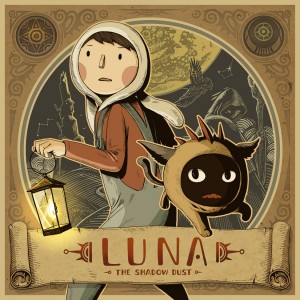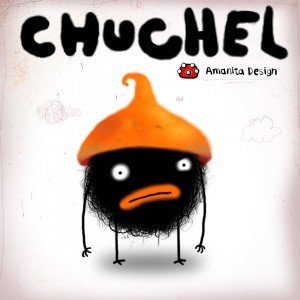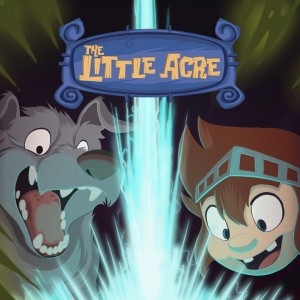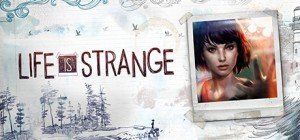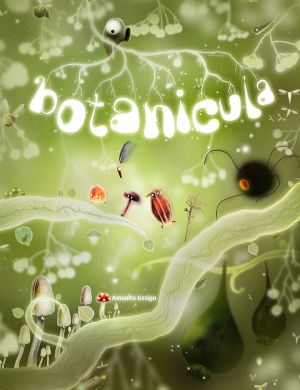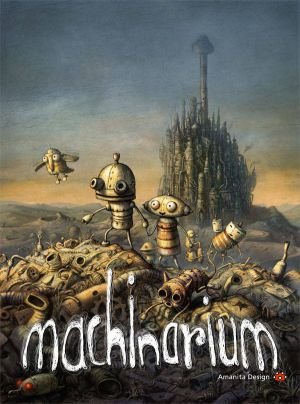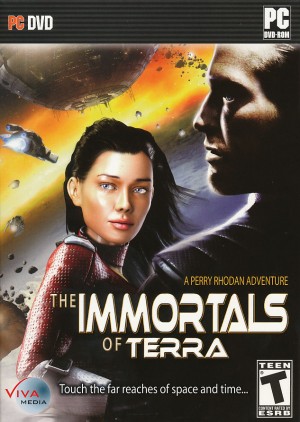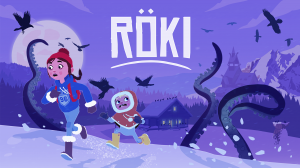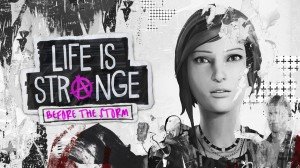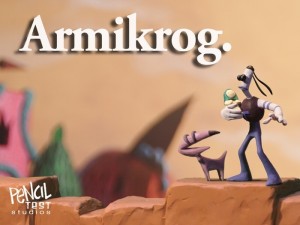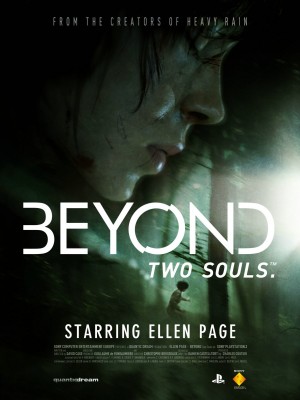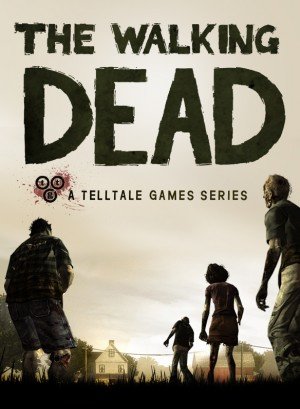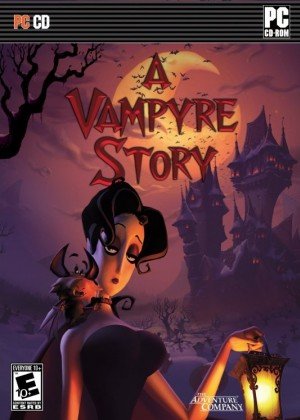Best AnimationAggie Award Winners

From “bustling” city streets that look deserted to clouds that never move, animation is rarely the genre’s strong suit, often the victim of budget constraints. But richly animated adventures add so much to player immersion that any game that goes the extra mile in this area is deserving of appreciation. This category includes in-game character and ambient animations, plus cinematic cutscenes.
» Aggie Awards - category overview
The Aggie award winners:
LUNA: The Shadow Dust (2020 winner)
There were some highly cinematic big(ish)-budget 3D titles released in 2020, but you just can’t beat the more personal touch of animating a graphic adventure by hand, frame by frame. Out of several impressive examples of the latter, none were more outstanding than LUNA: The Shadow Dust. The debut adventure from Lantern Studio is a gorgeous game at first sight, with delightfully textured and warm 2D art, but it really comes alive when seen in glorious motion, which should come as no surprise as it was inspired by an animated short by artist Beidi Guo when she was still in university.
It starts with the smaller details as you attempt to ascend a mysterious tower: shadows flicker from the illumination of glowing lamps, faded wall murals slowly crackle full of colour, and a wooden spaceship gently bops as you ride. These all help bring each playable scene of the enchanting world of LUNA to life, inviting you in like a well-worn children’s storybook. And then there are the larger moments that you can’t help but stop and watch: dazzling giant spirits whizz past you in a library, your circular cat-like sidekick waddles and tumbles and transforms into different forms, and a powerful array of cutscenes propels the story at key intervals. It all just feels so painstakingly crafted, oozing attention to detail in every stroke of the designer’s pen. Proving you don’t need a lot of money, just a whole lot of love to make a game a visual treat, LUNA bounces off with our award for Best Animation.
2020 winner of:
2020 Readers Choice' winner of:
- No awards won
Gibbous: A Cthulhu Adventure (2019 winner)
How many times have we directed a game protagonist to use an item but all we see is some fade-to-black or generic hand gesture to simulate activity? It’s common for adventures to skimp on costly and time-consuming animations, particularly from smaller indie studios, but Stuck In Attic’s Gibbous: A Cthulhu Adventure flips that notion on its head. The 2D visual style is superb on its own, packed with personality and colour, but what really elevates the appealing presentation is its abundant animation, including delightfully expressive motions from its eclectic cast of characters that really sell the humour, such as private eye Don R. Ketype fruitlessly leaping to clasp a flag or the feline Kitteh showing ninja-like prowess in retrieving out-of-reach items. There are wonderful smaller details too, like when characters lean against furniture while talking or when a tavern patron narcissistically slicks his hair back. This is further perfected in the cutscenes sprinkled throughout, which are as expressive and stylish as any TV cartoon. For that we are pleased to award this Aggie to Gibbous… and do so very animatedly!
2019 winner of:
2019 Readers Choice' winner of:
CHUCHEL (2018 winner)
In Amanita’s charming CHUCHEL, the eponymous fuzzball with an acorn hat spends most of his time in manic pursuit of his favourite fruit, a ripe red cherry – and then working himself out of the jams he invariably lands himself in. His shenanigans are a riot, whether cracking a giant egg with an oversized spoon too heavy to balance, brawling with punch-up robots, playing whack-a-pinkish-bean-shaped-critter, being dangled upside down by a Kong-sized hand, or trying to free his tongue stuck to ice. The zany cartoon world in which he lives can be hazardous, but whether Chuchel gets squashed, blown up, stretched or morphed into something else entirely, cartoon rules apply, and he eventually returns to his original shape – usually.
Equally animated is Chuchel’s wide range of emotions when reacting to the crazy characters he meets. He might throw a temper tantrum, display frustration, cower in fear, approach calmly and politely, or jump for joy. It’s anything but subtle, so there’s never any doubt about how he feels at any given moment, which is crucial in a game with no (intelligible) words. What makes this array of activity all the more impressive is that it’s all gloriously and painstakingly hand-animated. None of that fancy 3D stuff here! CHUCHEL looks surprisingly simple in still screenshots, but in motion it’s continually a delight. Realism plays no part in this world, allowing its visual gags to draw us in and make us laugh. Call it poetry in commotion: for successfully making us care about this ever-so-human clump of fluff, the indie Czech developer claims another 2018 Aggie for Best Animation.
2018 winner of:
2018 Readers Choice' winner of:
AER: Memories of Old (2017 winner)
With AER: Memories of Old, developer Forgotten Key achieved something few games have managed in the past: making players feel as though they can actually fly. While other games have allowed their heroes to take to the skies, few have ever made soaring through the clouds feel as effortless and genuinely pleasurable as the experience on offer here. With just a few quick button presses, the young protagonist can transform into a bird and loft herself airborne, gliding between gorgeous low-poly floating islands with remarkable ease. You can practically feel the wind in your face, your stomach rising and falling with every swoop, climb, bank and landing. Perfectly complemented by user-friendly controls that help bring this breathtaking sensation to life, AER's fluid flight mechanics went a long way toward securing this game our Best Animation award.
Unlike many flight sims, navigating the open space here is surprisingly simple, making you wish the entire game took place high above the ground. Plan to spend far longer than is actually necessary traversing between islands, opting for the long way around just to stretch each trip out a little bit longer. Thankfully, the animation is just as appealing on terra firma, as you stumble upon the various wildlife populating this fantastical world. Getting one of these adorable little animals to fall in love with you is just one of the memorable highlights. And within the puzzle-laden temples, ever in motion is the heroine herself, as she runs, jumps, and climbs her way from one platforming obstacle to the next. While the controls here may not be nearly as forgiving, the action is never less than a joy to behold. And then, back to the skies!
2017 winner of:
2017 Readers Choice' winner of:
- No awards won
The Little Acre (2016 winner)
If there’s one area that indie adventures routinely get short-shrift, it’s animation. And for good reason: it’s time-consuming, costly, and difficult to do well. If corners need to be cut, that’s where it usually happens, whether with fade-to-blacks, hidden cheats, or generic action loops. Not so The Little Acre, which goes far above and beyond the call of duty by infusing every scene with vibrant activity. The game looks lovely enough in screenshots, with its meticulously hand-painted brush stroke backgrounds and colourful cartoon-styled characters. But it’s only in motion that the charming fantasy adventure from Dublin studio Pewter Games comes brilliantly to life. There’s loving detail everywhere in backgrounds filled with ambient activity. Birds fly through clouds as the chimney smokes atop a rustic rural cottage, animals scurry through the green undergrowth and ambers rise from glowing lights, all lending to the sense that this world – in fact, two very different worlds – are alive.
But the artists didn’t stop there, as it’s the extensive character action that really sets the game apart. To illustrate, when young Lily wants to make some porridge, she almost ends up trashing the place, saved only by the family’s attentive dog. It’s wonderfully kinetic, with Lily scrambling up furniture as her wide-eyed pooch chases after her in frustration and alarm, until finally the wayward goop hits the ceiling and satisfyingly plops down into the bowl below. There are countless other examples too, like the dynamic frenzy of a cat scuffling with a guard, or a giant monster lurching from the caverns of an alien land, all fluidly rendered in-game. Plus there are many subtle touches, like the bouncing inquisitiveness of a friendly green creature or Lily’s hair bobbing as she jumps. While its bigger-budget 3D competition was impressive, it’s the tremendous hand-crafted attention evident in The Little Acre that makes it so charming to play, and a deserving winner of our Best Animation award.
2016 winner of:
2016 Readers Choice' winner of:
- No awards won
Life Is Strange (2015 winner)
Ahh, the joys of adolescence. (Um, not.) Across five episodes, Life Is Strange drew us into the melodramatic, fun, painful, confusing, exhilarating world of American teenager Max Caulfield and her blue-haired bestie, Chloe Price – a world that comes alive thanks to the natural animations of its characters. Crossed arms and an impatient glare from the teen queen who’s been slighted, best friends dancing on a bed with the stereo blaring, the awkward body shift of a girl uncomfortable in her own skin – these gestures and more bring a graceful fluidity to a game set during the time of life that, for most of us, was anything but graceful.
In a cinematic game like Life Is Strange, the payoff for good animation goes far deeper than the occasional cutscene. Poses, gestures, facial expressions, camera cuts – all combine to create a world we can believe in (no small feat in a hyper-realistic setting with a cast of human characters). The animation is most impressive in crowds: tune out the story for a minute just to watch how each individual character moves during the End of the World party or the climactic tornado and you’ll realize the vast attention to detail the animators have infused in these massive scenes. But the smaller, quieter moments are just as masterful: two girls treading water in a pool at night, crying in the front seat of a beat-up truck, clinging to each other on the edge of a windy cliff, balancing on a train track holding hands. Each episode is chock full of well animated vignettes like these – so many that even if you turned the sound down and ignored the plot, Life Is Strange would tell a beautiful story, a tremendous achievement that earns the game this year’s Best Animation award.
2015 winner of:
2015 Readers Choice' winner of:
Valiant Hearts: The Great War (2014 winner)
At first glance, cartoon animation might seem to be almost the antithesis of the grim brutality of war. But then the bombs start to fall… and planes fly overhead, tanks rumble across corpse-strewn battlefields, smoke billows from distant strikes, and hundreds of soldiers charge against armoured machine gun sentries, most of them falling dead in their tracks. Such are just some of the horrors thrust upon the brave men who fought in World War I, all evocatively recreated in Valiant Hearts: The Great War. Imagine a graphic novel-style rendition of Saving Private Ryan’s Omaha Beach landing and you’ll get the idea. (Wrong war, but all-too-similar results for its combatants.)
The animation may be deceptively simple, but it perfectly encapsulates the conditions of warfare and the emotional turmoil of those caught in its path. Often frantic, like when you’re forced to flee in a car from invading zeppelins, and at times serene, such as poignant moments in a hospital full of wounded, backgrounds can be full of action in one moment and tellingly still the next. Even subtle touches like dust falling in a deserted house or insects buzzing around lamps contribute to a living, breathing world in peril – or rather a dying, gasping world in peril. For making us truly feel the fury of war, Valiant Hearts is a most deserving winner for Best Animation this year.
2014 winner of:
2014 Readers Choice' winner of:
- No awards won
Lilly Looking Through (2013 winner)
Many of the most beloved adventure games have earned their places in players’ hearts by virtue of unforgettable stories and characters that resonate with us emotionally. More often than not, they are fleshed out by virtue of great writing and storytelling, delivered in the form of narration and dialogue. But what of a game that features none of the former and only a small handful of spoken sentences? How does such a game convey emotion and evoke a heartfelt response from the player? As Lilly Looking Through beautifully illustrated this year, the use of painstakingly-crafted animation can have a great deal to do with how we as an audience connect to a game, and for that it nosed out some impressive, slickly-produced competition for our Best Animation Aggie Award.
Lilly’s fantastical world, as well as Lilly herself, has been animated with the utmost love and care. The hand-drawn art style is soft and lushly detailed; environments project a serene calm and it is a joy to just let your eye wander and organically pick up small nuances like the swaying of a flower or the ripple of water. Even more impressive, however, is the way Lilly moves through and interacts with her world. Moving from Point A to Point B may entail Lilly dashing along a path, slowing down as she approaches a gap, throwing out her arms to balance across a board, then struggle as she scrabbles up onto a raised platform. It’s endearing to watch her respond to a new discovery with wide-eyed amazement, or wince at a loud crash while covering her head. But her character truly comes to life as we watch incidental animations, like Lilly throwing herself at a boulder with arms and legs splayed, then slowly sliding down as she fails to find purchase, or taking it upon herself to try kicking off a game of leapfrog with an actual frog. These realistically childlike moments never feel like “just another animation sequence”, and they gave us all the incentive we needed to care about Lilly, with barely a word spoken.
2013 winner of:
2013 Readers Choice' winner of:
- No awards won
Botanicula (2012 winner)
Animation in adventure games is rarely more than a secondary feature that enhances the visual experience and provides a few cinematic wow moments that punctuate the story. But once in a while are we treated to a game that uses animation as its primary element, brilliantly wielding it to actually tell the story and propel the gameplay; to convey emotions and solve puzzles; to charm and to terrify. Without a traditional user interface or even dialogues, Botanicula uses the movements of its bizarre world – a surreal tree full of living inhabitants – to weave its tale of courage and commitment in the face of near-insurmountable odds. The experiment-driven gameplay involves animation at its very core: unhindered by instructions, you cavort towards the goal of eradicating the tree of sap-sucking aliens by poking and prodding various characters and items to yield intelligently-devised chain reactions of actions and consequences. Even puzzles use animation expertly in both idea and execution, whether you have to carefully nudge lazily-floating orbs into holes, or participate in a beetle derby.
The unique, organic canvas of Amanita Design's latest classic is sketched with elements that are little more than blobs and lines, yet each resident of the vast menagerie of anthropomorphic characters is visually distinct, and enlivened by realistic and captivating animation. The fervent little beings exist in a constant state of motion, whether talking, laughing, fighting, eating, sleeping, or colliding. Besides the main quest, there are distractions aplenty: you can click flowers into blooming, disturb creepy-crawlies ensconced in nooks and crannies, play chase with baby-bugs and watch gory puppet shows. Physical gestures are excellently adapted in movement and expression, and despite the overall cutesy ambience, fear is visceral as you watch invading spidery parasites relentlessly drain the tree of its sap. Playing Botanicula is like being there, and for illustrating that you can engage, challenge and entertain without saying a word if you have the right moves, it flutters off with this year's Best Animation award.
2012 winner of:
2012 Readers Choice' winner of:
L.A. Noire (2011 winner)
From the time it was first announced, much of the pre-release buzz surrounding Team Bondi's 1940s Hollywood detective yarn, L.A. Noire, related to its revolutionary motion capture technology. One of the title's central gameplay systems – the ability to detect lies from reading body language – hinged significantly on the success of this technology, so the game's facial animations needed to not only be technically impressive but emotionally believable as well. With a budget behind it that most adventures can only dream of, thankfully the animations on display in the finished product exceeded their promise. While the dreaded Uncanny Valley wasn't completely avoided, the level of facial animation allowed for details such as subtle eye twitches and the setting and unsetting of jaws to come across in a way they never had before.
But there’s so much more to L.A. Noire’s impressive animation than just nervous blinking and awkward glances. There are many, many moving parts througout the historically recreated Los Angeles backdrop. The streets are filled with cars going about their daily business, while pedestrians roam the sidewalks, the nosiest clambering to catch a glimpse of the latest crime scene investigation. It’s a joy to simply to drive around the city soaking in all the sights, though it gets a little treacherous when the bright sunny days give way to pelting rainy nights. As a game with a moderate action element, there are car chases, shootouts and fistfights, and these too are convincingly orchestrated, if requiring some getting used to at first. In a genre that is all too often guilty of static screens and empty environments, L.A. Noire is almost the antithesis of what we’re used to. The combination of phenomenal performances from a seasoned cast and a living, breathing post-war world helped create an experience unlike any that came before, allowing the game to easily walk (or perhaps run or drive) away with our Best Animation award.
2011 winner of:
2011 Readers Choice' winner of:
Professor Layton and the Unwound Future (2010 winner)
When you think of the Professor Layton games, puzzles probably spring to mind more readily than animation. And with its presentation largely done in a slideshow format, you might assume that the latest game in the series is an odd choice for this award. However, Professor Layton and the Unwound Future (or Lost Future in Europe) is packed with extensive cutscenes that are true exemplars of the animator’s art, packing a wealth of detail onto the small DS screen. Utilising the same attractive European art style of its predecessors, reminiscent of such critically acclaimed feature films as The Triplets of Belleville, these are animations that would not look out of place in a cinema release themselves.
Improving further still on the earlier Layton games, the cutscenes in Unwound/Lost Future are truly impressive pieces of work. The opening scene of Layton and Luke riding a bus through London includes a smooth pan around Big Ben’s clock tower, milling crowds on the pavement and London traffic all around them. A shot showing Luke through the double decker bus window even includes reflections of the bustling activity outside. This attention to detail is maintained throughout, right up to the spectacular conclusion. With quality this good, it is hardly surprising that in Professor Layton and the Eternal Diva, the series has taken the strength of its animation to a full Japanese film release. This is cinematic animation as it should be, and a worthy winner of our Aggie Award.
2010 winner of:
2010 Readers Choice' winner of:
- No awards won
Machinarium (2009 winner)
Sometimes the simplest tools are still the most effective in skilled hands. You’d think a game made with Adobe Flash would struggle under the burden of its limited framework, but Amanita Design understands how to squeeze every last drop out of Flash animation techniques. In Machinarium, flat paintings come to life with subtle ambient detail, robot characters move expressively and fluidly, while cinematics are frequent and generous in length and personality. Even the idling animation of the player character has half a dozen variations, and we dare even the most hardened cynic not to feel utterly charmed by the optional robot dance sequence.
Being animated on a flat plane, Amanita has used an array of clever techniques like motion blurring to disguise that, simply put, they're doing the digital equivalent of pushing paper dolls around, and the result is a well-rounded and coherent world. Yet there’s still more to the presentation than that, as thought bubbles appear above characters’ heads in lieu of dialogue, and the remarkably revealing contents of each are animated in delightfully shaky line drawings. Such animation fits the aesthetic perfectly. Indeed, the art and animation achieve a natural, elegant symbiosis, earning Machinarium the animation Aggie to add to the design award already in its virtual trophy cabinet.
2009 Readers Choice' winner of:
The Immortals of Terra: A Perry Rhodan Adventure (2008 winner)
Bringing to life a fictional world, either fantasy or futuristic, is a job requiring care for all the little details, lest it otherwise fail to suspend the player’s disbelief or allow full immersion in the story. Originating from a popular sci-fi book saga, The Immortals of Terra: A Perry Rhodan Adventure already had a well developed world, the so-called “Perryverse”, to draw upon to tell a believable story with established characters to populate it. Still, Perry Rhodan faced the challenge of successfully translating this literary universe to an audiovisual format without compromising its authenticity. Fortunately, its skillful use of animation manages to do so superlatively.
The first few minutes of the adventure are awe-inspiring, with an opening cutscene that is not only visually stunning but also sports a cinematic quality that's very uncommon in the genre today. The diverse game environments are just as smoothly animated, whether through beams of light glittering in the dark, spacecraft flitting through the sky, patrolling androids, or flashing lasers. Even the character movements are fluid and impressive, from the numerous strolling passersby to the pompous guards of the Residence to technicians repairing damaged machinery, with sparks and smoke rising from their tools. There are moments when you’ll want to stop playing, just to watch Perry Rhodan’s universe coming to life and drawing you into this strange, fascinating world, utterly convinced of its plausibility.
2008 winner of:
2008 Readers Choice' winner of:
- No awards won
Readers Choice' Award winners:
Röki (2020 winner)
Just as its artwork is more “beautiful but doesn’t know it” than “obsessed with looking good,” so too is Röki’s animation more subtle than overtly in-your-face. There are no splashy cutaway cinematics as everything is rendered in-game, but it’s all the more impressive for never breaking immersion. You’ll revel in the young protagonist’s toboggan flight down a snowy mountain, hold your breath as she’s pulled underwater by a malevolent tentacled creature, and cringe each time the game’s witch-like antagonist spins her head around 180 degrees without moving her body. But you’ll also delight in the quieter moments, like when the silhouetted foreground elements you’ve come to take for granted suddenly move as a wolf raises its head to howl as you trot by. There’s such a committed attention to detail on display in bringing this fairy tale world to life, earning the game another well-deserved graphical reader award.
Gibbous: A Cthulhu Adventure (2019 winner)
Looking good in a screenshot is one thing, but looking good in action is the bigger challenge for an adventure game, and one that Gibbous manages to handle with aplomb. The wonderful cartoon aesthetic depends on lively animations to bring it to life, and clearly Stuck In Attic made it a labour of love to achieve just that. From wonderful facial expressions and poses and gestures, to strangely zombie-like passersby wandering the streets, to rewarding interactions from the protagonists, there are no shortcuts taken here. Then sprinkle in a few charming cinematics – we dare you NOT to laugh out loud as Kitteh continually bounds into view as the two protagonists race head-first toward the camera – and you’ve got the makings of a unanimous selection between staff and readers for Best Animation.
Detroit: Become Human (2018 winner)
Detroit: Become Human
If there’s one thing that looks better than Detroit: Become Human, it’s seeing Detroit in motion. Sometimes that newfangled “3D” thing IS all it’s cracked up to be! The game’s many stunning cutscenes are breathtaking, its characters’ gestures and emotive facial expressions incredibly lifelike, and its Quick Time Events deliciously cinematic. With the high point arguably being a daring escape across a busy freeway, often the action moves at such breakneck speeds that you’ll need to replay certain segments multiple times just to properly enjoy them in all their eye-catching glory. Hand-crafted animation put up a commendable fight even among our readers, but in the end you found that nothing could match the slick moving presentation of Quantic Dream’s latest opus.
Life Is Strange: Before the Storm (2017 winner)
Life Is Strange: Before the Storm
If there’s one area where adventures games routinely fall short, it’s animation. Usually we’re lucky to get an intro cinematic, a few ambient effects, and some rough-around-the-edges character interactions playing out on-screen. What a treat, then, to get so many worthwhile competitors this year. Perhaps it’s no surprise that the top two are among the biggest-budgeted games of the year, but the artists still needed to deliver, and in Life Is Strange: Before the Storm, developer Deck Nine did just that, offering fluid and realistic character animation with a rich abundance of environmental detail in motion. From the most hectic moments, such as Chloe jamming on air guitar in the rafters far above a driving rock concert, to the most serene, like a peaceful afternoon at the railway tracks overseen by twittering birds and skittish squirrels, for adventure fans this is the next-closest thing to a cinematic CG movie – and it had to be, to beat out some impressive runners-up.
King’s Quest (2015/2016) (2016 winner)
Remember how we keep telling you that every vote in the reader poll counts? Nowhere was that more true than the Best Animation category, as the five top games were separated by the slimmest of margins. You certainly couldn’t go wrong choosing the King’s Quest reboot, which is packed with generous animations. Environments are alive with amusing detail, whether shrubs that tremble and roar or castle guards galloping about piggyback-style. Graham himself is the epitome of animated, from his gangly gait with rippling cape to vivid facial expressions to unbridled bursts of enthusiasm. Lively set pieces abound, whether our hero is evading a rampaging monster, rescuing valuables from a fire, scaling an icy tower, or even smooching his eventual bride (however awkwardly). Some of the most exciting scenes were interrupted originally by Quick Time Events, until the developers wisely dropped them so we could just sit back and enjoy. Even stuck in his bed, King Graham managed to deliver one of the most active adventures in years.
Armikrog. (2015 winner)
Kind of the yin to our Best Setting yang, the reader vote for Best Animation goes to the game that isn’t the most seamlessly fluid or vividly alive, but the one that forsook fancy computer-generated wizardry for good old-fashioned handcraft. That’s not to say the results aren’t worthy: Tommynaut struts with a firm stride, his stringy hair flapping behind him. His companion Beak-Beak trots nimbly, short legs churning as he falls, tail wagging briskly. Sparks shower as Tommynaut drives his cable car, and the whole thing vibrates, zooming and jolting along the wall. Octovator devices blink and smack their lips, tentacles swaying gently. Knobs and levers clack and flutter as a bubbly liquid surges through the power tubes. But when you consider that all this was painstaking filmed, frame by freaking frame, it’s an even more truly remarkable achievement.
Broken Sword 5: The Serpent’s Curse (2014 winner)
Broken Sword 5: The Serpent’s Curse
The tables are turned in the 2D vs. 3D debate, as we’ve both chosen 2D adventures for Best Animation, albeit different ones. Admittedly, the actual characters in Broken Sword 5 are animated in 3D, but let’s not quibble over technical details. What matters is how beautiful the game looks in action, right from the opening cutscene of an eagle swooping down Catalonian mountains. It’s not just the cinematics that impress, however, but the extensive in-game animations, whether engaging in gunfights, shimmying across beams, or escaping a deadly cable car ambush high up in the air. There’s even a dance sequence, and of course who can forget Moue’s full-bladdered squirming or George being butted by a goat? For making The Serpent’s Curse feel like a cartoon come to life, the latest adventure of George and Nico earns the reader nod this year.
BEYOND: Two Souls (2013 winner)
There’s little wonder why the animation of Quantic Dream’s latest psychological thriller shone the brightest among our readers this year. After all, the game’s actors were meticulously filmed using motion capture technology to ensure the utmost fluidity and realism. And not just for the large action set pieces either, but for even the tiniest of facial expressions. You’ll truly believe you’ve watched the real Ellen Page cry when you see tears running down the cheeks of protagonist Jodie Holmes. Perhaps the tears will flow again when news of the readers’ Best Animation award gets out.
The Walking Dead (2012 winner)
I think we can safely declare the The Walking Dead not only the readers' choice for Best Animation, but the unanimous winner of the "Best Reanimation" award as well. From convincing human interaction to terrifying zombie attacks to shambling, shambling everywhere(!), this is far and away the most cinematic Telltale adventure to date. The five-episode season often felt more like an interactive movie than traditional adventure game, thanks in no small part to the rich animation that brought the zombified world to... life (so to speak).
L.A. Noire (2011 winner)
The top animation award this year was really a no-brainer (or maybe an all-brainer, since we both got it right!). Team Bondi’s incredible mocap technology took facial animation to unprecedented heights, and 1940s Los Angeles felt truly alive all around you, like a city really should and yet so infrequently does in a genre that rarely has the budget to effectively animate. Let’s enjoy it while we can.
Heavy Rain (2010 winner)
When a game is touted as an interactive drama, it had better be able to back up the claim with an engaging cinematic experience. Heavy Rain succeeded in doing just that, in no small part to the high quality of its likelike animation. With convincing, emotive facial expressions and smooth motion-captured performances from real actors, this game comes as close as any we've seen to pole-vaulting over the Uncanny Valley.
Machinarium (2009 winner)
Ever wonder where a game protagonist stores all the inventory items? We didn’t have to wonder in Machinarium, as we watched the little robot gobble down, suck up, or otherwise mechanically ingest his collectables in numerous endearing ways. It’s just one tiny example, but indicative of the incredible attention to animated detail that characterizes this deserving reader vote winner.
A Vampyre Story (2008 winner)
Too often we see an adventure protagonist's arm lazily waved in the general direction of an item, only to see it magically disappear, but not so in A Vampyre Story. The comic adventure goes to great lengths to animate every action in detail, earning it the top reader vote and completing its graphic domination over the nearest challengers, Sam & Max: Season Two and The Immortals of Terra.




